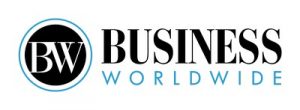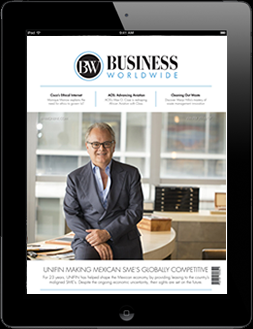Removing breast tissue before it becomes cancerous is often a race against time. Resitu’s cutting edge medical device has the potential to enable diagnosis and treatment in one step.
Breast cancer is the most common cancer among women worldwide, accounting for approximately a third of all cancers in women. It is estimated that around one in eight women (12 per cent) will develop this invasive disease during the course of their lifetime, and 2021 statistics evidence that breast cancer was attributed as causing the second highest number of fatalities among female cancer patients.
With these stark facts in mind, it is clear that early diagnosis and treatment are crucial for improving survival rates and reducing the risk of complications.
Stefan Sowa, CEO of Uppsala, Sweden based Resitu, has devoted his career to the life science industry. Describing himself as an ‘industrial entrepreneur in medical technology,’ he and his current team at Resitu have a diverse life science and medical history spanning more than thirty years together, and a collective hundred years in the medical device production sector. After many years of such collaborative expertise in product design and development, plastic surgery, and the use of new cost-effective medical treatments, Resitu was established in 2019 with the aim of developing revolutionary equipment for the healthcare industry.
Today, less than four years later, Resitu has strong ties with breast cancer surgeons at Uppsala University Hospital as well as radiologists at Karolinska Hospital Stockholm, and is progressing a technique which has the potential to create a real paradigm shift in breast cancer management. Here, Stefan describes this pioneering option and the advantages it brings to both patients and the wider healthcare sector.
Diathermy is a surgical technique which uses heat from an electric current to cut tissue or seal bleeding vessels. Could you briefly explain how Resitu’s innovative new device uses this option to speed up the process of breast cancer management?
Guided by ultrasound, the clinician places the tip of the instrument at the site of the lesion. Pulling back the handle creates a vacuum which allows the entire lesion to enter the tube. The instrument is pushed gently into the breast and a diathermic electrode is pushed forward with the slider on the handle. The handle rotates and severs the lesion from its surrounding area, the lesion is then sent for analysis. Intended for use by surgeons and radiologists, this technique is quick and easy to use, it can remove large intact tissue samples, and avoids the need for open surgery.
A major advantage of this treatment option would be the savings it incurs. From a patient’s perspective, what would you consider to be the benefits gained from the use of this technique?
For the patient there are multiple time saving benefits to this. Firstly, as this procedure is so straightforward, simple and quick to use, it can be used in outpatient settings. Therefore it cuts down on the number of hospital visits patients generally require, and with minimal invasive intervention it eliminates risks and the possibility of needing post-operative care.
Secondly, and most importantly, the timescales for accurate diagnosis have the potential to be dramatically reduced, leading to faster treatment and an improved patient experience overall.
Presumably these savings in time will inevitably trickle down to produce cost savings for clinics?
Being that the clinics will be able to generate a faster throughput of patients, they will be able to treat more patients in less time. A biopsy can be completed in less than half an hour instead of perhaps anywhere between 45 minutes and two hours with traditional surgery. Therefore this diathermy technology significantly reduces the time spent in managing the breast care treatment process and with it the need to remedy post-operative complications.
However, the real health / economic advantages lie within the unique features of the device and its technology. The device itself will not only extract larger tissue specimens than any other instrument currently on the market, but has the ability to preserve their structure during removal.
Multiple analysis, tumour typing and sequencing can be done faster and more efficiently. The use of diathermy reduces the risk of tissue damage and bleeding through immediate coagulation. Removing the lesion at first visit saves time, but also prevents further lesion growth.
These advantages are further endorsed by reputable surgeons within Uppsala University Hospital, one of Sweden’s leading university hospitals and a world leading research centre. Andreas Karakatsanis, Consultant Breast Surgeon highlights that the combination of diathermy technology and Resitu’s ground breaking device ‘yields the potential to change practice and help a large group of patients, not only with benign disease, but also with cancers of the breast, to avoid surgery. In this way, we could avoid overtreatment, enhance patient experience and mitigate the burden for the healthcare system.”
Resitu’s innovative medical device has a clearly defined ability to revolutionise breast tumour management. Are there any obstacles to overcome in implementing this device, and in which countries do you plan to start treatments?
Our device enables removal of suspected tissue before it becomes dangerous. A tumour less than 2cm in size means a 100% survival rate, so early screening is crucial and our patented technology is the only option to open surgery. The vision is to move the point of care from a hospital to the gynaecologist, but the challenge will be in presenting extensive clinical data to support this. Our strategy is to start with a line of products intended for breast tissue biopsy (estimated regulatory approval 2024) and then continue the development with a clinical investigation (2026) that aim to prove that malignant tumours can be removed safely with the same outcome as standard treatment, which today is open surgery in a hospital. The first line of products will focus on breast tissue biopsy. Our aim is to start with Sweden, Germany and Benelux, followed by the rest of the EU, UK and the US.
Uppsala, Sweden based Resitu develops instruments designed to extract lesions without the need for open surgery. Using a process known as diathermy, its minimally invasive technology aims to speed up tumour management and expedite the ways in which radiologists and surgeons work. The organisation is certified according to ISO 13485 for the design, development, manufacture and sales of electrosurgical instruments for tissue removal, and supports the Swedish Cancer Society in their important contribution to cancer research funding.
Further information on how Resitu’s new ultrasound guided device is set to disrupt traditional methods of tumour management can be found on the company website – www.resitu.com

















